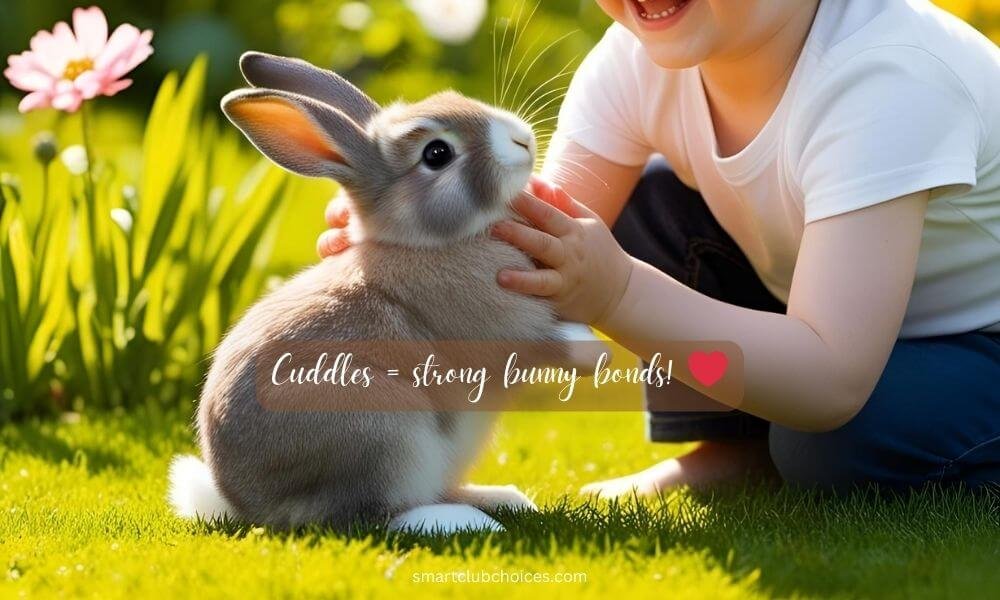Do Rabbits Need a Friend? Understanding Their Social Needs
Rabbits are social creatures. They’re not just fluffy little loners who sit in a corner nibbling on carrots all day (though that’s a cute mental image).
In the wild, rabbits live in large groups called colonies, where they groom each other, play, and even have complex social hierarchies.
So, what does this mean for your pet bunny? Do they need a friend, or are they perfectly happy being your one-and-only fluffball?
The short answer is: yes, rabbits generally do better with a buddy. But like all things bunny-related, it’s not that simple.
In this guide, we’ll explore the social needs of rabbits, the pros and cons of getting a second bunny, and how to introduce a new friend to your furry family. Let’s hop right in!
Table of Contents
(1) The Social Life of a Rabbit
Why Rabbits Are Social Animals
In the wild, rabbits rely on their colony for safety, companionship, and even emotional support. They groom each other, snuggle together for warmth, and keep an eye out for predators. This social structure is hardwired into their DNA, and domestic rabbits are no different.
Signs Your Rabbit Might Be Lonely
- Lethargy: A lonely rabbit might seem less active or playful.
- Destructive Behavior: Chewing on furniture or digging excessively can be a sign of boredom or stress.
- Over-Grooming: Some rabbits groom themselves excessively when they’re lonely or anxious.
- Lack of Appetite: A sad bunny might lose interest in food.
Can Humans Replace a Rabbit Friend?
While your bunny might adore you (and your treat-giving abilities), you can’t fully replace the companionship of another rabbit. Humans can’t groom their fur the way another bunny can, and let’s face it—we’re not great at speaking “bunny.”

(2) The Pros and Cons of Getting a Second Bunny
The Pros
- Companionship: A second bunny provides constant companionship, which can reduce stress and loneliness.
- Playtime: Two bunnies can play, groom, and explore together, keeping each other entertained.
- Health Benefits: Happy, socialized rabbits are less likely to develop stress-related health issues.
The Cons
- Double the Work: Two bunnies mean double the food, double the cleaning, and double the vet bills.
- Bonding Challenges: Not all rabbits get along right away, and the bonding process can take time and patience.
- Space Requirements: You’ll need enough space to accommodate two bunnies comfortably.
Is a Second Bunny Right for You?
Before getting a second bunny, consider your lifestyle, budget, and the needs of your current rabbit. If you have the time, space, and resources, a second bunny can be a wonderful addition to your family.
(3) Choosing the Right Friend for Your Bunny
Same-Sex vs. Opposite-Sex Pairs
- Same-Sex Pairs: Two spayed females or two neutered males can make great companions. Just make sure they’re both fixed to prevent territorial behavior.
- Opposite-Sex Pairs: A neutered male and a spayed female often bond more easily and are less likely to fight.
Age and Personality
- Age: Pairing a younger rabbit with an older one can work well, as long as their energy levels are compatible.
- Personality: A shy bunny might do well with a more confident partner, while two dominant rabbits might clash.
Where to Find a Friend
- Rescues and Shelters: Many rescues have rabbits that are already spayed/neutered and may even offer bonding services.
- Breeders: If you go this route, make sure the breeder is reputable and prioritizes the health of their rabbits.
(4) The Bonding Process – From Strangers to Soulmates
Why Bonding Takes Time
Rabbits are territorial animals, and introducing a new bunny can be stressful for both parties. The bonding process helps them establish trust and a positive relationship.
Step-by-Step Bonding Tips
- Start Separately: Keep the new bunny in a separate space for a few days to allow them to adjust.
- Swap Scents: Swap bedding or toys between the bunnies to help them get used to each other’s scent.
- Neutral Territory: Introduce the bunnies in a neutral area where neither has established territory.
- Supervised Playtime: Allow short, supervised play sessions and gradually increase the time as they get more comfortable.
- Watch for Signs: Look for positive signs like grooming, lying close together, or sharing food. Negative signs include chasing, biting, or fur pulling.
What to Do If Bonding Fails
If the bunnies don’t get along, don’t force it. Some rabbits simply aren’t compatible, and that’s okay. You can try bonding with a different rabbit or focus on giving your bunny extra love and attention.
(5) Keeping Your Bunnies Happy Together
Provide Enough Space
Two bunnies need plenty of room to hop, play, and explore. Make sure their enclosure is large enough and consider giving them access to a bunny-proofed room.
Double the Resources
- Food and Water: Make sure each bunny has access to their own food and water dishes.
- Litter Boxes: Provide multiple litter boxes to prevent territorial disputes.
- Toys and Hideouts: Give each bunny their own toys and hiding spots to reduce competition.
Monitor Their Relationship
Even after bonding, keep an eye on your bunnies to make sure they’re getting along. Occasionally, bonded pairs may have small disagreements, but serious fights should be addressed immediately.
(6) Conclusion: Two Bunnies Are Better Than One
While it’s possible for a rabbit to live a happy life as a solo pet, most bunnies thrive with a friend. A second bunny can provide companionship, reduce stress, and make life more fun for both of them (and for you).
That said, getting a second bunny is a big decision. It requires time, effort, and resources, but the rewards are well worth it.
Watching two bunnies groom each other, play together, and snuggle up for naps is one of the most heartwarming sights in the world.
So, if you’re ready to take the leap, go ahead and find your bunny a buddy. After all, a happy bunny is a hoppy bunny, and two happy bunnies? That’s double the joy.








